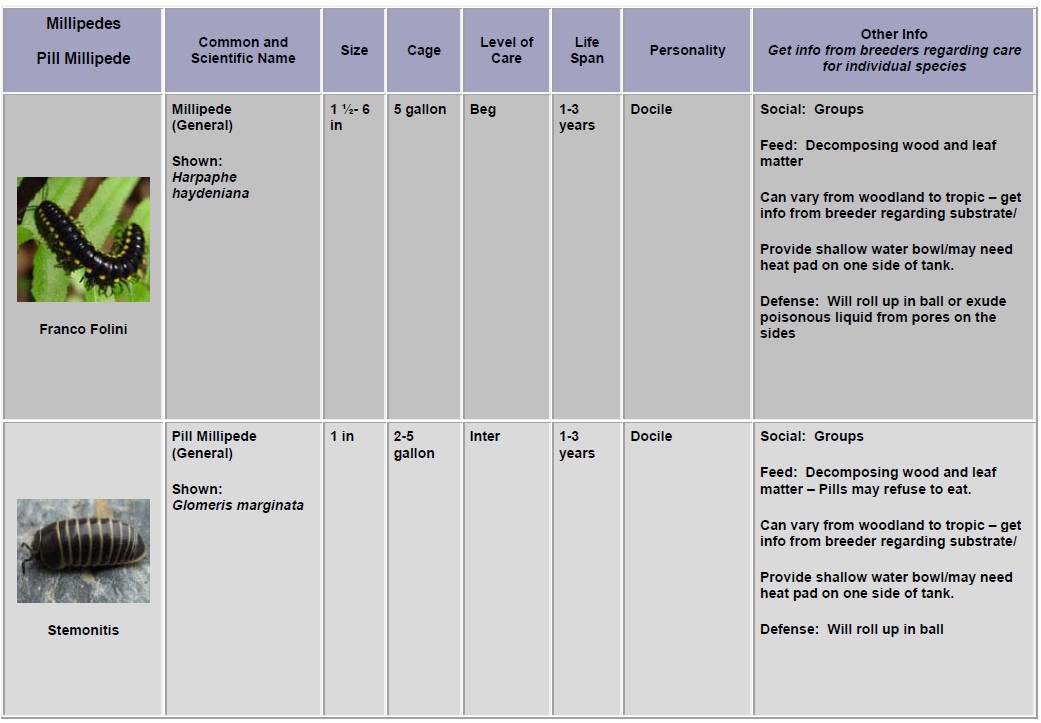Arthropod Pet Guides
Pick the Perfect Pet to Fit your Lifestyle!
Research, Resources & Education
Our objective is to serve as a platform for education, through extensive research and a wide range of links to resources. We strive to provide comprehensive and accurate information, and we understand that like humans, animals too are unique individuals. Therefore, it is essential to acknowledge that the information we provide is general and may not apply to every animal of a particular breed or species.
Table of Contents
Find the Perfect Arthropod
to Fit Your Lifestyle!
Guides to find the perfect arthropod tarantulas, scorpions, millipedes, hermit crabs, walking sticks, centipedes & cockroaches. This guide includes information on common names & family, size, level of care (beginner, intermediate or advanced) and general lifespan.
This also includes their personality and general information, such as should they be housed separate or in pairs.
Lastly, what size cage or housing do they need and what do they eat.
ABOUT Arthropods
Arthropods
- Arthropods are invertebrates that have a hard exoskeleton (skeleton on the outside), segmentation and jointed appendages.
- There are several classifications, which include Chelicerates (spiders and scorpions), Myriapods (centipedes and millipedes), Crustaceans (hermit crab) and Hexapods (insects from the butterfly to the praying mantis).
- All of the arthropods listed should be researched, as many, including several species of centipede, tarantula and scorpions, are not for the beginner hobbyist.
TARANTULA
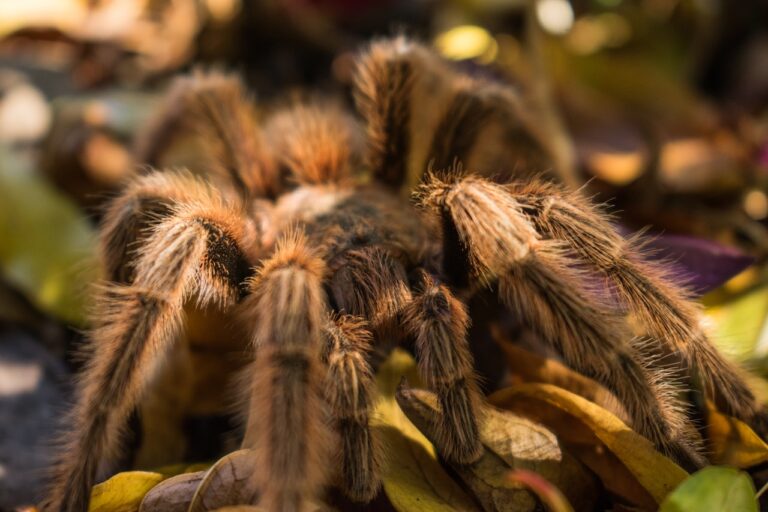
About Arachnids
- Arachnids can be either tree dwellers (arboreal) or ground dwellers, and both can emit silk.
- All tarantulas emit venom from fangs, although the amount and toxicity varies among species.
- Another defense in some tarantulas is in their hair.
- These are dense hairs, called urticating hairs that can be flung into the air using the back legs.
- These irritating hairs can cause rashes, serious itching and can be imbedded into the skin if you try to wipe them off.
- Rinse hairs off with water and avoid getting them into your eyes.
- Tarantulas will eat prey about half their size (although some will eat prey as big as themselves).
- You can feed everyday or every other day until they are full.
- Remove any prey that has not been eaten in a 24 hour period, as well as any remains.
- Provide a bowl of water and/or mist one side of the tank.
- Your tarantula may not eat one week prior to molting (shedding off the outer exoskeleton to allow for growth).
- After molting the tarantula should not eat for several days.
- During the molting they may lay on their back – they are not dead.
SCORPION
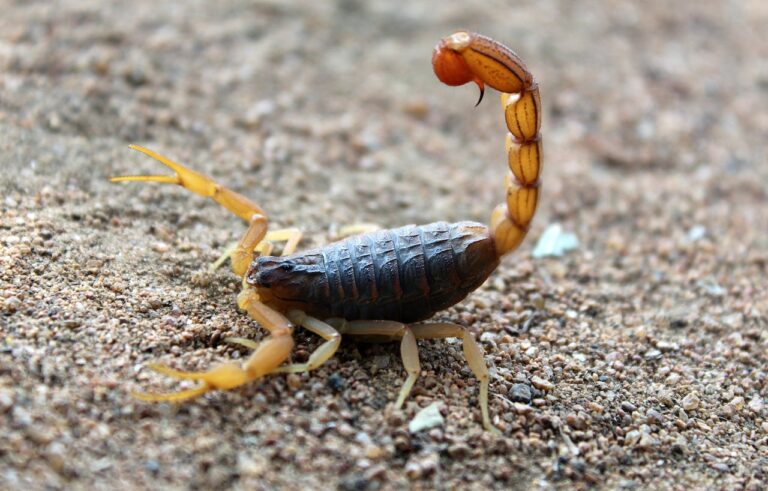
About Scorpions
- Like the tarantula, the scorpion also carries venom, as well as pincers.
- It is not recommended to handle a scorpion, but if you must, pick it up behind the stinger with long foam tipped tweezers or your fingers and put it on the palm of your hand.
- You can also either coax it to walk into a bowl or onto the palm of your hand.
- Remember, when being picked up by the tail it can turn around and pinch, but usually will not bite the hand (or ground) it’s walking on.
- Keep in mind they can run very quickly and may hide in a dark place never to be seen again.
- The venom varies among species, but very few are fatal to humans.
- Most stings are like bee stings with localized swelling, etc, but if you have a severe reaction, seek medical advice.
- Although most scorpions stay on the ground, they are very good at climbing over objects, squeezing through small openings and pushing tops off the cage, so make sure the screen top has a lock.
- Purchase a tank sufficient for the number of scorpions housed, but remember even communal scorpions can be cannibalistic.
- A hint when purchasing a scorpion is that the most poisonous species can walk up the side of a glass tank.
- Scorpions are nocturnal so special lighting is not required, but a under tank heating pad may be necessary on one side for certain species.
- DO NOT OVERHEAT.
- Under a black florescent light, the scorpion will “glow”.
- Substrates and heating vary depending on species, so check with the breeder.
- Scorpions can eat from every few days to once a week.
- Some may fast for a month, so don’t worry.
- Babies will eat more often than adults.
- Provide a shallow water dish and replace daily.
- Like the tarantula, the scorpion also refuses food before molting.
- The scorpion is vulnerable during and after molting, so if it is a communal tank, please keep a careful watch.
CENTIPEDE / MILLIPEDE
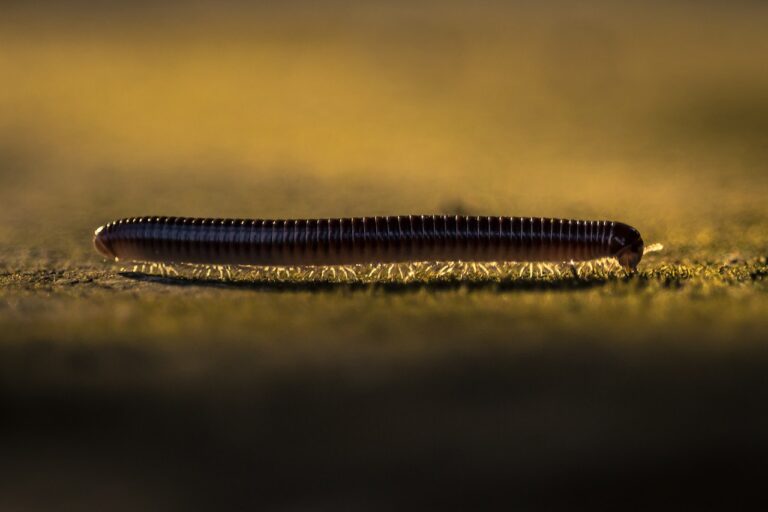
About Centipedes
- Centipedes should never be handled.
- They do not sting, but have a pair of poisonous claws behind their head used to paralyze prey.
- The pinch can cause severe pain with throbbing and swelling that can last for hours.
- If you need to handle use thick gloves or a snake hook for larger species.
- Centipedes can be kept in plastic containers or in a terrarium.
- Make sure they have enough room to explore their environment.
- They can come from either a tropical or arid environment, so check with the breeder for the appropriate environment and substrate for your species.
- Although centipedes are nocturnal, a blue or red bulb can be used for night viewing.
- Provide a water bowl if needed.
About Millipedes
- The millipedes first line of defense is rolling up into a ball.
- Although generally harmless to humans, their secondary defense is to emit a poisonous gas (cyanide or hydrogen cyanide) through pores along the side of their body.
- The main effect on humans is discoloration and possibly an allergic reaction.
- Do not get this substance into your eyes.
- Some animals such as some monkeys and lemurs have been known to rub themselves in this substance as a form of bug repellant.
- Try to keep your millipedes on a consistent diet, as they do not like constant change.
- Another thing to remember is to have a tank twice the length of your millipede and do not overcrowd the tank.
- Do not put them in with any carnivorous creature like the spider or centipede.
- These are nocturnal creatures, so no special lighting is required, although you may want a blue or red bulb for night viewing.
- Millipedes also like to burrow, so check with the breeder for the appropriate substrate for your species.
- Keep the tank moist and provide a water bowl if needed.
OTHER ARTHROPODS
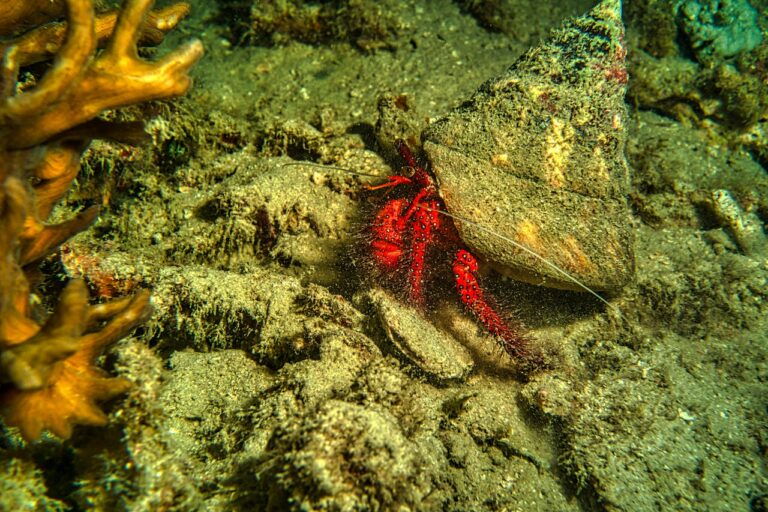
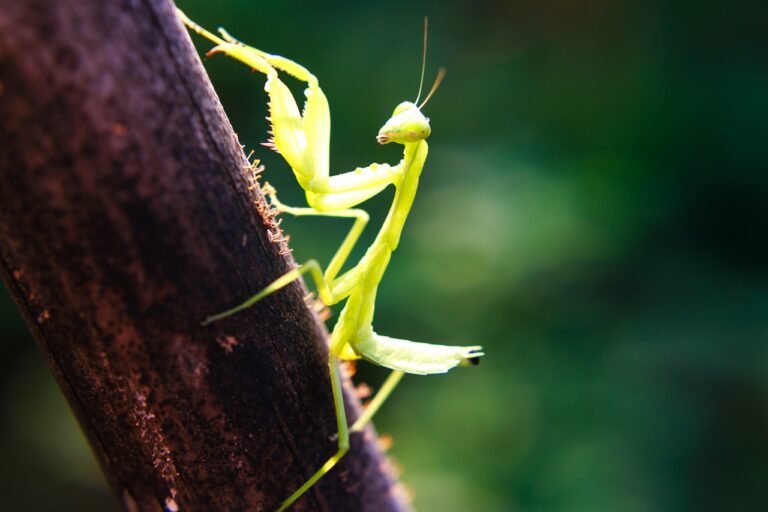
References
| Pet | Subject | Company / Link |
|---|---|---|
| Exotic Pets | What Is an Exotic Pet? | Spruce Pets |
| Insects | Care Sheets | Amateur Entomologists' Society |
| Reptiles | General Information | New England Herpetology Society – NEHS |
| Reptiles | Care Sheets | PETCO |
| Reptiles | Care Sheets | Reptastic |
| Reptiles | Care Sheets | Western New York Herpetology Society |
| Turtles | Care Sheets | Reptastic |
| Turtles | Care Sheets | Western New York Herpetology Society |
| Turtles | General Information | Wikipedia |





